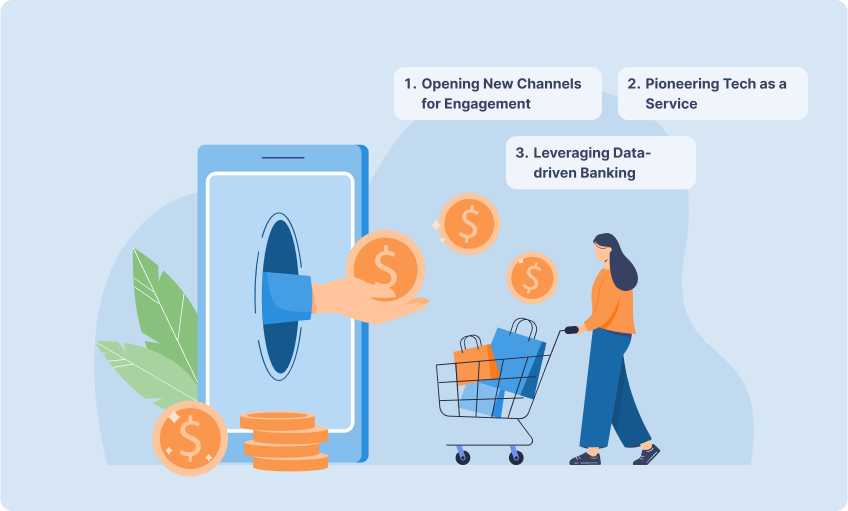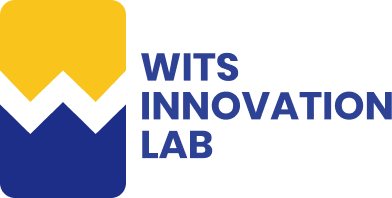The rollout of the Open Network for Digital Commerce (ONDC) in India brings a crucial change for the retail and banking sectors. With the ONDC in place, banks must understand how to get the most from the platform, which is the most important thing to do. Among the many benefits of the technical support we receive from working with multifaceted banks, we identified the multifaceted opportunities that ONDC presents to the banking sector, which are strategic approaches that can be used to gain these advantages.
ONDC Advantages for Banks

1. Opening New Channels for Engagement
The ONDC platform empowers banks to expand their influence beyond the conventional banking channels by providing them with an unprecedented opportunity. This policy is crafted so that the banks can explore the huge potential in the Bharat region, which is the area of cities beyond tier 2. Through utilizing ONDC, banks like IDFC FIRST and YesBank have pioneered a trend, confirming how financial institutions are increasingly reaching out to untapped consumer groups.
This strategic move is more than a simple way of adding up to the number of customers; it is about giving MSMEs (micro, small, and medium enterprises) equal opportunity to financial services. Lending working capital loans and other financial services through ONDC will fix a very void market. MSMEs of the smaller business class, which usually play a significant role in the Indian economy, have always lacked the required finance promptly. The conventional banking system's stringent credit assessment procedures and the requirement for collateral often exclude these small businesses from the formal financial ecosystem.
The ONDC platform acts as a bridge, connecting these MSMEs with banks willing to support their growth. This link is enabled by a digital market that is seamless and more inclusive than before. Banks shall be able to provide financial products for businesses with specific features by their unique needs, thus leading to economic growth and entrepreneurship spreading across the country.
In addition, the banking model that focuses on clients makes it possible for banks to form long-term relationships with more clients. Through funding emerging MSMEs, banks foster economic development and build up a core of customers whose future financial needs are likely to lead them to use other banking services as their businesses expand. This approach aligns with the broader goals of financial inclusion and sustainable development, placing banks as key players at the basis of the country's economic development.
This strategic move is more than a simple way of adding up to the number of customers; it is about giving MSMEs (micro, small, and medium enterprises) equal opportunity to financial services. Lending working capital loans and other financial services through ONDC will fix a very void market. MSMEs of the smaller business class, which usually play a significant role in the Indian economy, have always lacked the required finance promptly. The conventional banking system's stringent credit assessment procedures and the requirement for collateral often exclude these small businesses from the formal financial ecosystem.
The ONDC platform acts as a bridge, connecting these MSMEs with banks willing to support their growth. This link is enabled by a digital market that is seamless and more inclusive than before. Banks shall be able to provide financial products for businesses with specific features by their unique needs, thus leading to economic growth and entrepreneurship spreading across the country.
In addition, the banking model that focuses on clients makes it possible for banks to form long-term relationships with more clients. Through funding emerging MSMEs, banks foster economic development and build up a core of customers whose future financial needs are likely to lead them to use other banking services as their businesses expand. This approach aligns with the broader goals of financial inclusion and sustainable development, placing banks as key players at the basis of the country's economic development.
2. Pioneering Tech as a Service
ONDC integration offers many data rewards to banks, the likes of which have never been seen before, with access to the deepest part of the consumer's behavior, tastes, and financial habits. This data-driven method translates into creating custom-made personalized banking services and unique products precisely tailored to individual needs and the delivery of targeted promotions that appeal to these customers.
For MSMEs, the use of data-driven banking is becoming ever-transformative. Transparency in orders, invoices, and transaction histories, which ONDC provides, helps banks do an in-depth analysis of the creditworthiness of MSMEs. Unlike the past, in which credit scoring systems needed historical financial statements and collateral to be the backbone, the current systems' approach is dynamic. They can also examine current performance, cash flows, and market conditions. Such an informational gap between lenders and borrowers may be filled in with more accurate assessments of risk and the provision of financial tools that suit the needs of the MSMEs.
Besides, banks can predict what their clients are looking for and possible future problems and provide preventive financial solutions with data-driven banking. To illustrate this, analyzing the transaction data can detect that a certain MSME is experiencing cashflow problems frequently at some specific months and offer a short-term financing solution that will bridge the gap.
Moreover, the wealth of data available through ONDC enables banks to refine their customer segmentation strategies, designing and offering products and services for niche markets that were previously underserved. This level of customization enhances customer satisfaction and loyalty, as customers receive services that genuinely meet their needs.
In the broader context, data-driven banking represents a shift towards more inclusive financial services. Using the ONDC's vast data environment, the banks could get an opportunity to reach these sections who have been facing discrimination, aiming at financial inclusion and democratization of financial services in India. This application of the dual approach leverages customers and banks on one hand. It ensures the system's sustainability and financial system's stable nature.
For MSMEs, the use of data-driven banking is becoming ever-transformative. Transparency in orders, invoices, and transaction histories, which ONDC provides, helps banks do an in-depth analysis of the creditworthiness of MSMEs. Unlike the past, in which credit scoring systems needed historical financial statements and collateral to be the backbone, the current systems' approach is dynamic. They can also examine current performance, cash flows, and market conditions. Such an informational gap between lenders and borrowers may be filled in with more accurate assessments of risk and the provision of financial tools that suit the needs of the MSMEs.
Besides, banks can predict what their clients are looking for and possible future problems and provide preventive financial solutions with data-driven banking. To illustrate this, analyzing the transaction data can detect that a certain MSME is experiencing cashflow problems frequently at some specific months and offer a short-term financing solution that will bridge the gap.
Moreover, the wealth of data available through ONDC enables banks to refine their customer segmentation strategies, designing and offering products and services for niche markets that were previously underserved. This level of customization enhances customer satisfaction and loyalty, as customers receive services that genuinely meet their needs.
In the broader context, data-driven banking represents a shift towards more inclusive financial services. Using the ONDC's vast data environment, the banks could get an opportunity to reach these sections who have been facing discrimination, aiming at financial inclusion and democratization of financial services in India. This application of the dual approach leverages customers and banks on one hand. It ensures the system's sustainability and financial system's stable nature.
3. Leveraging Data-driven Banking
The emergence of ONDC has paved the way for the banks to become complete banking technology solution providers by establishing banking technology stacks. Such a change in the model signifies a new approach to banking and provides additional opportunities for banks to generate revenues from subscriptions or value-added services.
Integrating the banks' ONDC buyer and seller apps enables a financial platform with many hip-to-hip financial products and services in the digital commerce ecosystem. This integration is vital since the presence of banks in the online commerce value chain places them in a critical position relative to financial service providers. The banks can now provide various services within the network, including payment processing and financial analytics, specifically for merchants and consumers on the ONDC.
This kind of 'Tech as a Service' model increases the importance of banks as technology gets used to address the intertwined complexities of business. Banks will take care of the technology supporting transactions in the ONDC network, guaranteeing smooth and secure transactions and enhancing the consumer experience. This approach also allows the banks to collect and analyze a great volume of transaction data, resulting in insights that banks can use to develop products, manage risk, and engage customers.
Furthermore, the B2B2C approach promotes a more cooperative environment where banks gain from improved efficiency, reduced costs, and heightened security, while the business and consumers do as well. For MSMEs, in particular, this model offers access to advanced financial and banking technologies that were previously far beyond their reach, empowering them to compete in the increasingly digital environment.
The shifting roles of banks where they also offer the 'Tech as a Service' could be seen as a window for diversifying interest-based fees as revenue. It allows banks to position themselves at the forefront of digital transformation, driving innovation in financial services and securing their place in the future of commerce.
Integrating the banks' ONDC buyer and seller apps enables a financial platform with many hip-to-hip financial products and services in the digital commerce ecosystem. This integration is vital since the presence of banks in the online commerce value chain places them in a critical position relative to financial service providers. The banks can now provide various services within the network, including payment processing and financial analytics, specifically for merchants and consumers on the ONDC.
This kind of 'Tech as a Service' model increases the importance of banks as technology gets used to address the intertwined complexities of business. Banks will take care of the technology supporting transactions in the ONDC network, guaranteeing smooth and secure transactions and enhancing the consumer experience. This approach also allows the banks to collect and analyze a great volume of transaction data, resulting in insights that banks can use to develop products, manage risk, and engage customers.
Furthermore, the B2B2C approach promotes a more cooperative environment where banks gain from improved efficiency, reduced costs, and heightened security, while the business and consumers do as well. For MSMEs, in particular, this model offers access to advanced financial and banking technologies that were previously far beyond their reach, empowering them to compete in the increasingly digital environment.
The shifting roles of banks where they also offer the 'Tech as a Service' could be seen as a window for diversifying interest-based fees as revenue. It allows banks to position themselves at the forefront of digital transformation, driving innovation in financial services and securing their place in the future of commerce.
Addressing the Digital Payment Revolution

The rollout of the Open Network for Digital Commerce (ONDC) in India brings a crucial change for the retail and banking sectors. With the ONDC in place, banks must understand how to get the most from the platform, which is the most important thing to do. Among the many benefits of the technical support we receive from working with multifaceted banks, we identified the multifaceted opportunities that ONDC presents to the banking sector, which are strategic approaches that can be used to gain these advantages.
Banks' Stake in ONDC: A Strategic Move
Major banks, for example, State Bank of India, Bank of Baroda, and ICICI Bank, invested in ONDC, like the pioneering of commercial banks, which NPCI (National Payments Corporation of India) at the beginning. Such measures bring banks the practical design of the business model, management approach, and business mode, which, like UPI's case, are now the central bank's key tools
Can ONDC Mirror UPI's Success?
The destiny of ONDC, which is to repeat the success story of UPI, is left to the extent that the masses accept its use, and its robustness in the face of market competition is tested. Big Tech's monopoly over the payments sphere needs to be addressed by ONDC, which is aimed at creating a competitive environment and leveling the ground for e-commerce and payments. Nevertheless, the comprehension of whether the climb of apps like PhonePe and Google Pay or the adoption of ONDC can be defeated still needs to be observed.
Conclusion
The integration of ONDC is a landmark event presented to banks to boost their online commerce business and make financial services more available and fair for everyone in India. This new segment of customers broadens up the customer base, so banks can serve unbanked or underbanked communities, which, in turn, contributes to financial inclusion. In this circumstance, the capability of ONDC to change banking would be beyond imagination. This includes improved customer engagement through new channels and data-driven banking products that meet the complex needs of every consumer group.
In the end, due to ONDC's plan to increase e-commerce penetration by a large margin in the upcoming years, banks that develop a strategy and adapt to take advantage of the platform are more likely to win the competition. They can extend their customer base and, therefore, significantly impact the flow of future digital commerce and banking in India. The banking service operation integration with ONDC requires a comprehensive approach to the ecosystem. Nevertheless, client acquisition, service improvement, and marketer expansion present an opportunity that is second to none. Banks are also faithful witnesses of the imminent digital revolution, which will provide a new condition for their growth with ONDC.
In the end, due to ONDC's plan to increase e-commerce penetration by a large margin in the upcoming years, banks that develop a strategy and adapt to take advantage of the platform are more likely to win the competition. They can extend their customer base and, therefore, significantly impact the flow of future digital commerce and banking in India. The banking service operation integration with ONDC requires a comprehensive approach to the ecosystem. Nevertheless, client acquisition, service improvement, and marketer expansion present an opportunity that is second to none. Banks are also faithful witnesses of the imminent digital revolution, which will provide a new condition for their growth with ONDC.

Written by / Author
Manasi Maheshwari
Found this useful? Share With
Top blogs
Most Read Blogs
Wits Innovation Lab is where creativity and innovation flourish. We provide the tools you need to come up with innovative solutions for today's businesses, big or small.
© 2025 Wits Innovation Lab, All rights reserved
Crafted in-house by WIL’s talented minds

